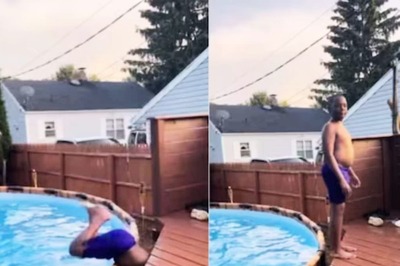
views
NEW YORK: Francisco Lindors $341 million contract with the New York Mets was supposed to be a boon for other shortstops. Same for pitchers when aces Gerrit Cole and Max Scherzer signed megadeals.
Baseball players have long benefited from trickle-down economics, where stars set a market that leads to bigger paydays for those down below. While a bevy of record-setting deals in recent seasons have boosted the top of the salary scale, they havent done much for players at the lower end and may have contributed to a thinning of the middle class.
Players belief in a top-down market and their desire to increase team payrolls are at the heart of the financial differences leading to Major League Baseballs first work stoppage in 26 years.
Lindor, Cole and Scherzer are on the unions eight-man executive subcommittee. The group also includes infielder Marcus Semien, catcher Jason Castro and pitchers Zack Britton, Andrew Miller and James Paxton. Of those, only Castro at $3.5 million earned less than $12 million last season.
Of the 1,670 players who appeared on a major league roster this year, 1,145 earned under $1 million, including 771 below $500,000 and 241 under $100,000.
Ultimately we are fighting to improve things in a lot of places for the next CBA, Miller wrote in an email to The Associated Press. We want every player to be treated and compensated fairly, every team to attempt to win and ultimately every fan of our game to see the best version of baseball possible.
Concerned salaries have been depressed by the luxury tax and a decline in major league payrolls since 2017, the union proposed lifting the tax threshold from $210 million to $245 million. Players would lower free-agent eligibility from six seasons of big league service to five for players 29.5 and younger by 2025-26 and drop salary arbitration eligibility to two years. The overwhelming percentage of gains would go to the highest earners.
MLB asserts union proposals would cause more stars to leave smaller markets, a stance players say is a ruse designed to hide an aversion to a spending surge.
The closer you get to a free market, the closer you get to accurate valuation to the players, and the more restrictions in place, the more artificial the salaries are, said Gabe Feldman, director of Tulanes sports law program. But then theres also the concern that all leagues have, that if there is a free market, then the big-market teams will attract all the best players because theyll be willing to pay more.
Negotiations broke off Dec. 1, hours ahead of the collective bargaining agreements expiration, and MLB launched a lockout the following day. The sides have remained publicly quiet since, and talks on the key economics are not expected to resume until next month as the scheduled start of spring training on Feb. 16 nears.
MLBs 100 highest-paid players accounted for 50.6% of 2021 earnings on opening-day rosters.
As many teams committed a higher percentage of payroll to stars, some jettisoned journeymen with seven-figure salaries in favor of younger players with split contracts: far lower pay in the minor leagues than in the majors. Because of that and the increased role of relievers, the bottom of rosters has become a constant churn between the majors and minors.
Weve been broadly at war with our mid-tier players over the last two decades, in the salary-cap sports and in baseball with the luxury tax and with free agency, said Bob Boland, a former agent who teaches at Penn States School of Labor and Employment Relations. If youre a players union, you know the top end of free agency will always have some value. What youre concerned about is, is there a vibrant bit of the next tier, and baseballs already cut that down strenuously.
MLB has proposed raising the major league minimum salary from $570,500 to a series of tiers: $600,000 for players with less than a year of big league service, $650,000 for at least one but less than two and $700,000 for at least two. Each would rise $10,000 annually, to $640,000, $690,000 and $740,000 in 2026.
Players have asked for the highest percentage minimum increase in decades: $775,000, rising to $875,000 by the final season. Both sides would raise minimums while on assignment to the minors.
Players also have proposed that those not yet eligible for arbitration split a $105 million bonus pool from central revenue, based on WAR, appearances on an all-MLB team and recognition such as best position player, best pitcher and best rookie.
Expanding the designated hitter to the National League likely would create several higher-paying jobs for veteran hitters.
Baseballs luxury tax threshold began at $117 million in 2003, increased to $148 million by 2007 and reached $206 million in 2019, the last season before the pandemic. The threshold rose 18% from 2013-19, a period in which MLB has announced revenue figures with a 49% increase.
Commissioner Rob Manfred put MLBs operating losses at $3 billion in 2020 because of the pandemic and said it was too soon to announce a 2021 figure.
At most, six teams have paid luxury tax in any season and the norm has been closer to three. Many clubs have treated the threshold as a cap, making the tax the most significant factor in limiting club spending. If tax level was the only factor, the proposed free agency and arbitration changes likely would shift an additional percentage of money to stars, but the union insists the economic system is not zero sum and there are compounding benefits to many players from its proposals.
Teams have offered a tax threshold of $214 million in each of the next three seasons, rising to $216 million in 2025 and $220 million in 2026.
And while teams have proposed a $100 million payroll minimum, it would be funded by a 25% tax on payrolls above $180 million. The union says the penalty at the top would more than offsets any gain at the bottom.
In addition, players want to stop what they term tanking and what the clubs call prudent decisions to tear down big league rosters in the short-term aimed at rebuilding for longer-term success.
Both sides have proposed expanding the playoffs, owners from 10 teams to 14 and players to 12, which would incentivize more competition. Players also want safeguards against service time manipulation, such as proposing the ability to accrue service time based on achievements.
Negotiators also have discussed an NBA-style draft lottery, but owners would limit it to the top three teams and players would expand it to the top eight. The union would reward small-market teams with additional draft picks for success, such as making the playoffs or finishing with a winning record.
For now, possible changes to speed the pace of play have been set aside.
___
More AP MLB: https://apnews.com/hub/MLB and https://twitter.com/AP_Sports
Disclaimer: This post has been auto-published from an agency feed without any modifications to the text and has not been reviewed by an editor
Read all the Latest News here




















Comments
0 comment